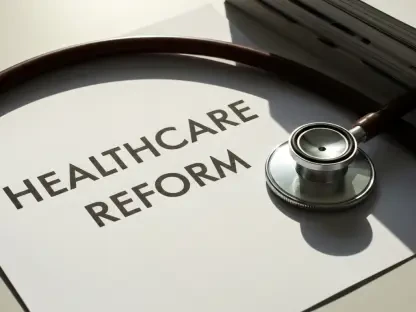The landscape of the U.S. healthcare system stands on the brink of significant change as President Donald Trump’s legislative initiative, known as the One Big Beautiful Bill Act, moves through the Senate. Amid ongoing political debates, this proposal aims to substantially roll back Medicaid coverage and modify the Affordable Care Act (ACA), widely known as Obamacare. These potential changes reflect attempts to reshape pivotal elements of a healthcare framework that millions of Americans depend on, presenting critical challenges and opportunities for the future of healthcare policy and governance.
Overview of Trump’s Proposed Health Bill
The primary focus of Trump’s proposed health bill is to reform the structure of Medicaid and ACA coverage. By imposing stricter administrative and eligibility requirements, the legislation seeks to alter the system initially designed to expand coverage for low-income and disabled populations. These reforms aim to address perceived inefficiencies within government health programs but have raised concerns about potential reductions in coverage for vulnerable individuals. Critics argue that under the guise of fiscal responsibility, this bill could result in substantial coverage losses, challenging access to essential health services.
Background and Context
Enacted to broaden healthcare availability, the ACA marked a significant evolution in the U.S. healthcare landscape, ensuring access for millions through Medicaid expansions and affordable insurance marketplaces. The One Big Beautiful Bill Act emerges against the backdrop of these historic measures, intending to reverse many key provisions. The proposed legislation holds broader relevance as it aligns with ongoing debates over government scope in healthcare, financial prudence, and societal commitments to healthcare equity. The intersection of political maneuvering, healthcare accessibility, and fiscal policy underscores its importance.
Legislative Strategy and Potential Outcomes
Legislative Strategy
To advance this controversial bill, a calculated political strategy is essential. Similar to the 2017 Republican attempts, the current efforts tactically avoid language evocative of an “Obamacare repeal,” in response to previous electoral setbacks. Instead, the strategy focuses on emphasizing fiscal accountability and combating fraud within federal healthcare programs. By framing their approach within these terms, advocates aim to garner broader political support while steering clear of polarizing rhetoric.
Potential Outcomes
If enacted, the legislation’s most profound anticipated outcomes involve marked reductions in Medicaid and ACA coverage. The bill targets work requirements for Medicaid beneficiaries, supplementing these with mandatory bi-annual eligibility checks. Such measures potentially lead to millions losing coverage, posing risks that loyalists could see as unwarranted. Additionally, the proposal seeks to end pandemic-driven premium subsidies that facilitated record enrollments in ACA marketplace plans. Without these subsidies, substantial premium hikes might discourage enrollments, rolling back insurance coverage gains.
Broader Impact
Beyond Medicaid and ACA impacts, the bill may have wider repercussions on healthcare access and equity. By mandating cost-sharing up to $35 for certain services, the proposal contrasts with Medicaid’s traditional model of accessibility. This could perpetuate inequalities, disproportionately impacting low-income groups reliant on Medicaid for affordable healthcare. Economically, these shifts might prompt state and federal government shifts in fiscal priorities, prioritizing tax cuts over healthcare funding, thus reshaping budgetary landscapes.
Reflection and Future Directions
Reflection
Assessing the legislative process and potential outcomes unveils significant challenges: maintaining a balance between perceived fiscal stewardship and ensuring equitable healthcare access. Practical implementation of new eligibility rules poses administrative hurdles; already strained health programs might face increased operational demands. Moreover, future amendments or extensions to the bill could be considered, tailoring provisions to address criticisms while preserving vital healthcare safety nets.
Future Directions
Moving forward, attention could focus on areas left unresolved or emerging needs within healthcare policy. Aspects like improving program efficiency without limiting access, enhancing administrative processes without unnecessary barriers, and expanding coverage inclusivity could become priority areas. Policymakers might examine the impact of existing reforms, identifying opportunities for refinement and innovation in health policy.
Conclusion
In summary, the One Big Beautiful Bill Act embodies an attempt to shift the parameters of Medicaid and ACA in the U.S. healthcare spectrum. While the legislative proposal aims to address perceived inefficiencies, critics warn of potential detrimental effects on health coverage and access. Looking ahead, proactive legislative focus on enhancing system robustness, equity, and fiscal responsibility is essential. As healthcare policy evolves, reconciling divergent ideologies on health access and equity will remain vital, shaping future healthcare landscapes in America.









